Farthing Downs

|
Farthing Downs with The Scotties
 We enjoyed a lovely morning, several cups of tea, chat and
lunch. Stomps to do, we bundled into Steve’s car and off we went to Farthing Downs.
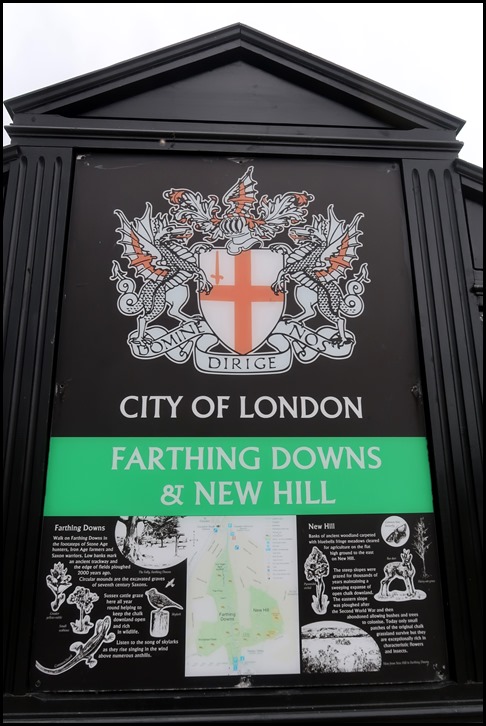 The stiff breeze took me sideways but
it couldn’t keep me away from the information
board. I cannot believe the City of London
bit........ The board reads: Walk on Farthing Downs in the
footsteps of Stone Age hunters, Iron Age farmers and Saxon warriors. Low banks
mark an ancient trackway and the edge of fields ploughed 2000 years ago.
Circular mounds are the excavated graves of seventh century
Saxons.
Sussex cattle graze here all year
round helping to keep the chalk downland open and rich in wildlife. Listen to
the song of skylarks as they rise singing in the wind above numerous
anthills.
New Hill. Banks of ancient
woodland carpeted with bluebells fringe meadows cleared for agriculture on the
flat high ground to the east on New Hill.
The steep slopes were grazed for
thousands of years maintaining a sweeping expanse of open chalk downland. The
eastern slope was ploughed after the Second World War and then abandoned
allowing bushes and trees to colonise. Today only small patches of the original
chalk grassland survive but they are exceptionally rich in characteristic
flowers and insects.
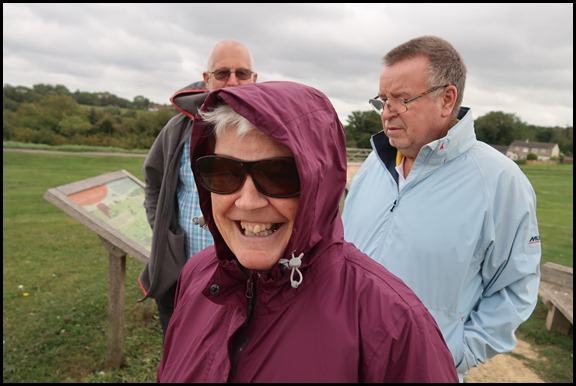 Maj led us
to the next board.
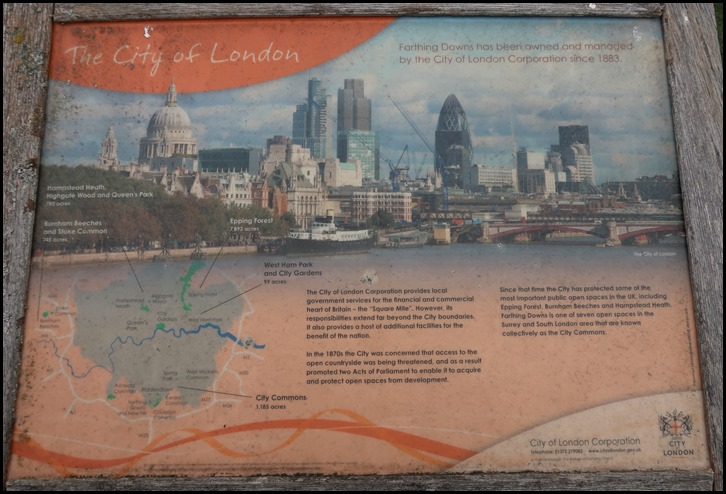 It had a vista of The City of London. Farthing Downs has been
owned and managed by the City of London Corporation since 1883. The City of
London Corporation provides local government services for the financial and
commercial heart of Britain – the “Square Mile”. However, its responsibilities
extend far beyond the City boundaries. It also provides a host of additional
facilities for the benefit of the nation.
In the 1870’s the City was
concerned that access to the open countryside was being threatened, and as a
result promoted two Acts of Parliament to enable it to acquire and protect open
spaces from development.
Since that time the City has
protected some of the most important public spaces in the UK, including Epping
Forest, Burnham Beeches and Hampstead Heath. Farthing Downs is one of seven open
spaces in the Surrey and South London area that are known collectively as the
City Commons.
Farthing Downs is owned and
managed by the City of London Corporation. Along with three other Coulsdon
Commons (Coulsdon Common, Kenley Common and Riddlesdown) it was acquired by the
City to protect it for the recreation and enjoyment of the public. More recently
the area of protected open space was increased with the purchase of New Hill in
2002 and Woodplace Farm Fields in 2004.
Happy Valley is owned by Croydon
Council and managed with the help of several partner organisations. The chalk
grassland slopes are home to many wild plants and animals, and one of Britain’s
rarest plants, the Greater Yellow Rattle, can be seen in the summer. There are
also rich wildflower meadows and ancient woodland to explore, and almost half of
all species of butterfly found in Britain can be seen in Happy Valley.
Then more detail about each common,
how impressive that these green spaces are protected and so well looked
after.
 There was an information board showing
wildlife but I was more interested in the
history.
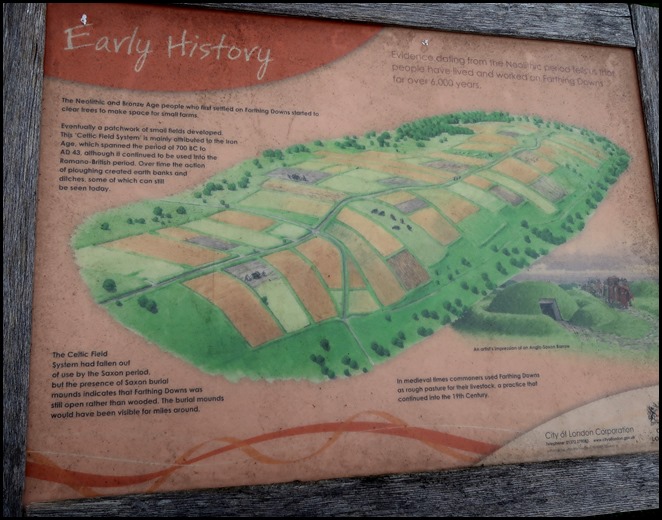 The Neolithic and Bronze Age
people who first settled on Farthing clear trees to make space for small farms.
Eventually a patchwork of small fields developed. This ‘Celtic Field System’ is
mainly attributed to the Iron Age, which spanned the period of 700 BC to AD 43,
although it continued to be used into the Romano-British period. Over time the
action of ploughing created earth banks and ditches, some of which can still be
seen today.
 The Celtic Field System had
fallen out of use by the Saxon period but the presence of Saxon burial mounds
indicates that Farthing Downs was still open rather than wooded. The burial
mounds would have been visible for miles around.
In medieval times commoners used
used Farthing Downs as rough pasture for their livestock, a practice that
continued until the 19th Century.
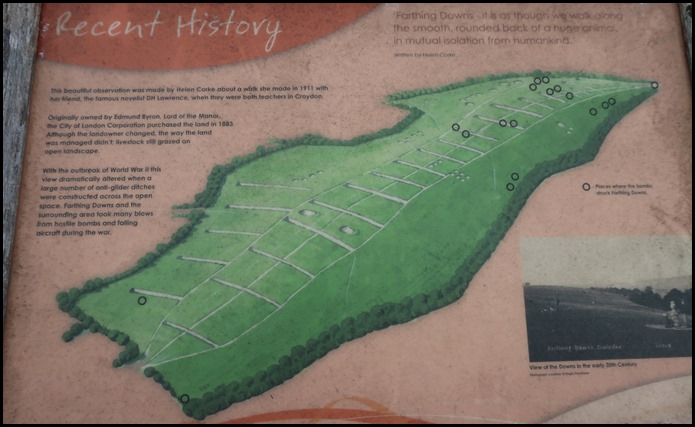 Recent
History. “Farthing Downs – it is as though we walk along the smooth,
rounded back of a huge animal, in mutual isolation from humankind”. This
beautiful observation was made by Helen Corke about a walk she made in 1911 with
her friend, the famous novelist DH Lawrence, when they were both teachers in
Croydon.
Originally owned by Edmund Byron,
Lord of the Manor, the City of London Corporation purchased the land in 1883.
Although the landowner changed, the way the land was managed didn’t; livestock
still grazed on open landscape.
With the outbreak of World War II
this view dramatically altered when a large number of anti-glider ditches were
constructed across the open space. Farthing Downs and the surrounding area took
many blows from hostile bombs and falling aircraft during the war. (Circles
in the view above).
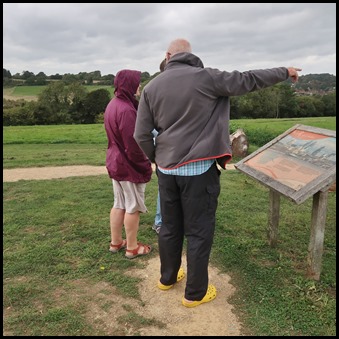 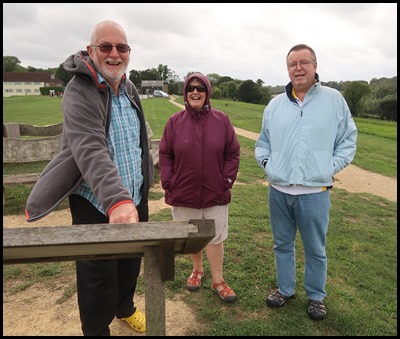 We bimbled about for a while and returned to the London skyline board. I see no
ships, Bear points and we still cannot
believe how close we are to London.
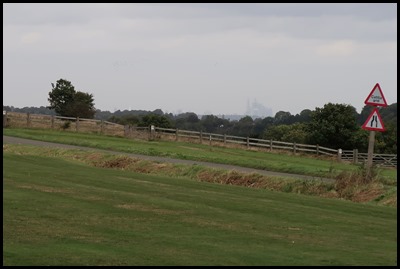 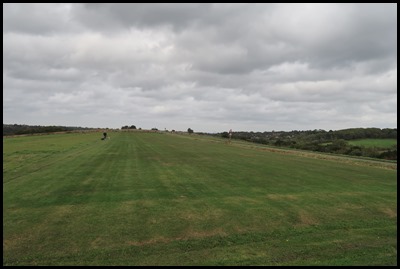 I had to zoom in a bit but we could
clearly make out (on the horizon) some of the tower
blocks of The ‘Ol’ Smoke, time to brave the even stiffer breeze to stomp
to the far end of the Downs.
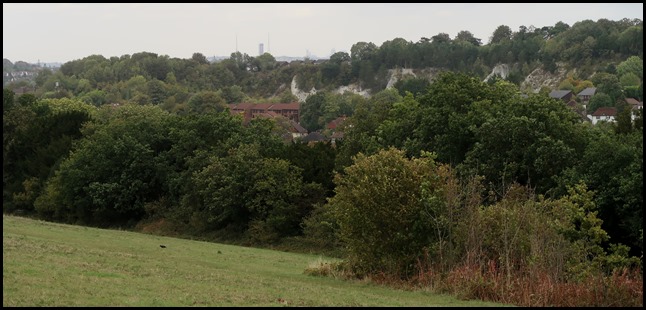 The skylarks did indeed play on the
wing singing their hearts out. To our right chalk
cliffs so reminiscent of my childhood in Kent.
 At the far end of ‘the green’ bit we could look left and see the water tower of Cane Hill Hospital, along with the admin block and chapel are all that remains, a housing estate is currently under construction (Steve would later drive us around to have a look). I found this piece seen in the Croydon Advertiser: Relatives of silent film star Charlie Chaplin, legendary actor Michael Caine and iconic singer David Bowie were all patients at Cane Hill Hospital in Coulsdon. And thousands more were admitted to the psychiatric facility over more than 100 years. But the hospital site is now in the process of being turned into more than 600 homes. Advertiser reporter Sam Truelove takes a deeper look into the history of the famous hospital. The opening: The hospital, designed by Charles Henry Howell, opened as the Third Surrey Pauper Lunatic Asylum in 1883 and was purposely set on a hilltop overlooking Coulsdon, near to Brighton Road. Just five years after opening, in 1888, the hospital reached full capacity and had more than 2,000 patients on its books. Its decline: In 1961 the then health minister Enoch Powell outlined his intentions of gradually closing asylums around the country. This led to the rear wards of Cane Hill closing two years later, leaving the population at 1,600. In 1985 the hospital announced it would not be taking new admissions, and by 1992 most patients were moved out to nearby facilities, with only the secure unit remaining. This was a shame for many, with even the mum of screen legend Charlie Chaplin treated at Cane Hill in the 19th century, while the brothers of actor Michael Caine and singer David Bowie also stayed there in the 20th century. Most of the site laid derelict for many years, with the secure unit eventually moving to what had been the Coulsdon Cottage Hospital, on Fourth Drive, Coulsdon, in 2006. The cottages held more than 20 patients until they closed in 2008. Destroyed by fire: Many would go and visit while it lay derelict, but it was heavily damaged by a fire in November 2010, which more or less destroyed all of what was left. Around 40 firefighters tackled the blaze and remained on site for more than 24 hours, with historians at the time calling it a “tragedy”. Now, more than seven years after the fire, developers David Wilson Homes and Barratt Homes have been granted planning permission to build 677 homes in a £20 million development on the site, which is to be called Cane Hill Park. Around 200 houses are nearing completion or have already been moved into by residents. While Cane Hill Hospital is no more, the history of the site lives on. Sad to see the demise of another institution. Not all asylums were bad, some had staff that cared and patients did as well as their mental issues would allow. Care in the Community did not solve everything. 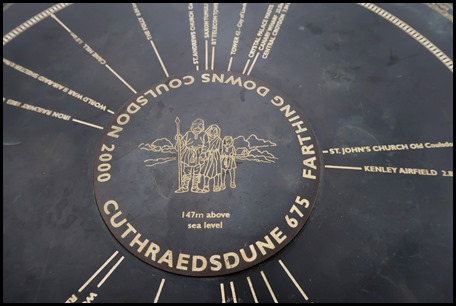 At the far end of the ‘green bit’ we
came upon a really interesting direction
wheel.
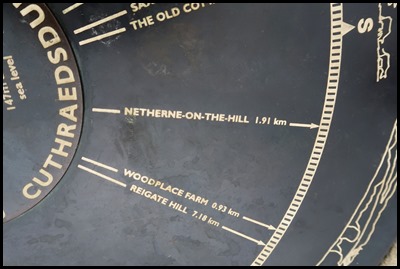 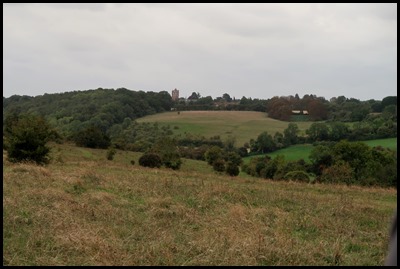 Over our left shoulder we could make out the water tower of Netherne Hospital where in 1942 Dr. Eric Cunningham Dax (who lived to just shy of his hundredth birthday) was medical superintendent of Netherne Hospital, called in surgeon Eric Radley Smith (one of the first British surgeons to perform a lobotomy and a hypophysectomy) to perform psychosurgery on patients. Before the end of the year, fifty patients had undergone surgery, and in April 1943 the results were published in the Journal of Mental Science. Cunningham Dax described how he selected patients: "The operation was carried out with the primary object of relieving the most disturbed patients in the hospital quite independently of their poor prognosis. They formed a large proportion of the most violent, hostile, noisy, excited, destructive or obscene cases in the hospital; the type who distress their relatives, upset the other patients and consume the time and energy which could be put to so much better purpose by the staff". Two died of cerebral haemorrhage, two were discharged (of whom one relapsed); of those remaining in hospital two-thirds had shown at least some improvement, needing less staff time and supervision. (E Cunningham Dax and EJ Radley Smith 1943. The early effects of prefrontal leucotomy on disturbed patients with mental illness of long duration. Journal of Mental Science. 89: 182-8). Between 2003 and 2005 most of the hospital buildings were demolished with only the administration block, recreation hall, chapel, water tower, staff housing and some wards being retained. These were later converted into apartments and incorporated into a new village community called Netherne-on-the-Hill. I was Eric Radley Smith’s last houseman before he retired from the Royal Free School of Medicine for Women in 1975, if my memory serves me. He offered his services during the Falklands War but at over seventy his offer was declined, he busied himself lecturing medical personnel before they left for the South Atlantic. He was a real character and lived to the ripe old age of ninety-two, he was a surgeon typical of his era who gained a huge amount of experience during WWII which he put to great use. His son predeceased him. Such a small world in so many ways. 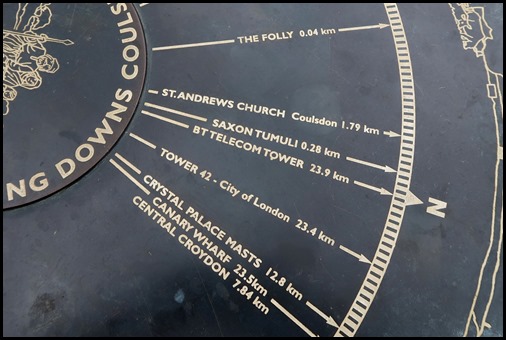 Wow, my grandparents lived down the
hill from the Crystal Palace Masts, in Thornton
Heath. When the ‘P’s’ (Crystal Palace Football Club) played at home - the
stadium was just along the road from the masts - we could always hear when the
home side had scored as we sipped tea in the lounge. My dad and brother Chris
were supporters and attended many a game. An even smaller world. I have never
been back since the loss of my beloved Nana and Pupa.
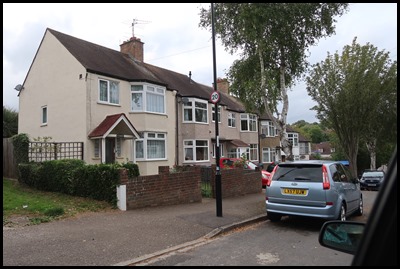 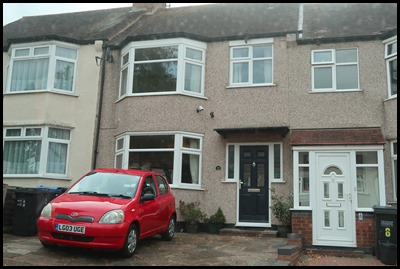 Margaret (of the friends we stayed
with last weekend) was born in a house a few roads from where The Scotties live.
After shopping and us gathering a few naughty treats Steve drove us down
Sherwood Road so I could take a picture of number ten to email to Margaret. Her
response was that “it looked a little bigger” than she had remembered. Back
indoors we really enjoyed a cup of tea and some cake. As is the norm, the
evening flew by, we ate a delicious supper, Steve allowed me to rummage in his
external hard drives and now we have loads of new stuff to watch.
ALL IN ALL ANOTHER SUPER DAY
WITH DISTINCT, INTERESTING SPOOKINESS
SURPRISINGLY BEAUTIFUL COUNTRYSIDE SO CLOSE TO
LONDON |